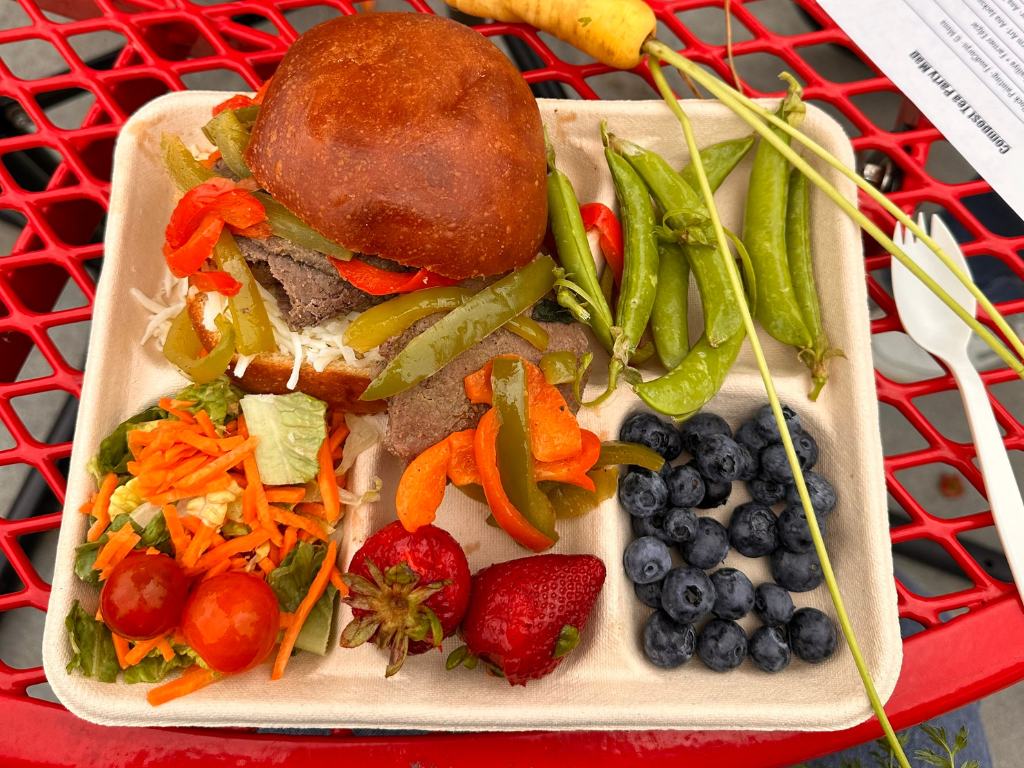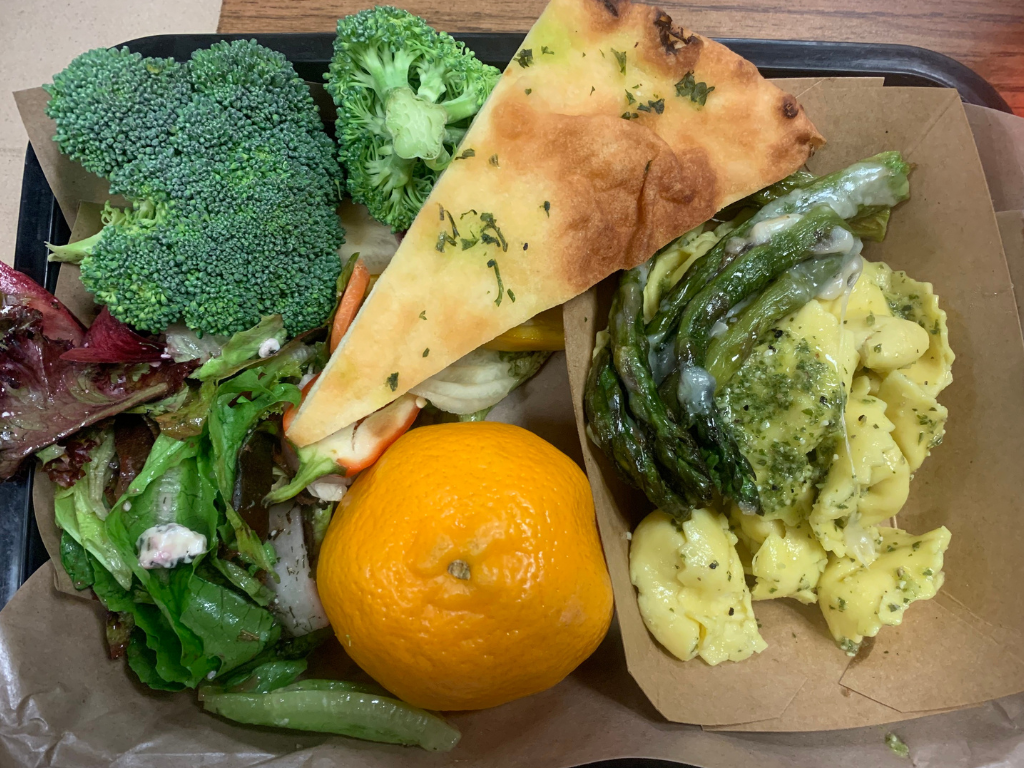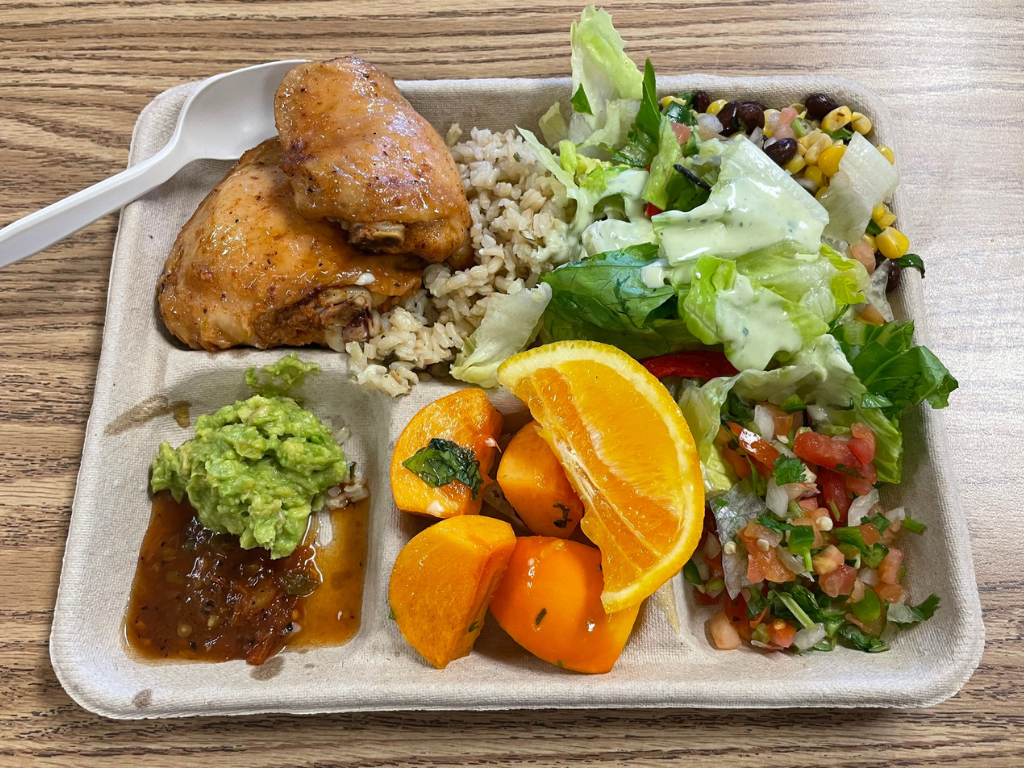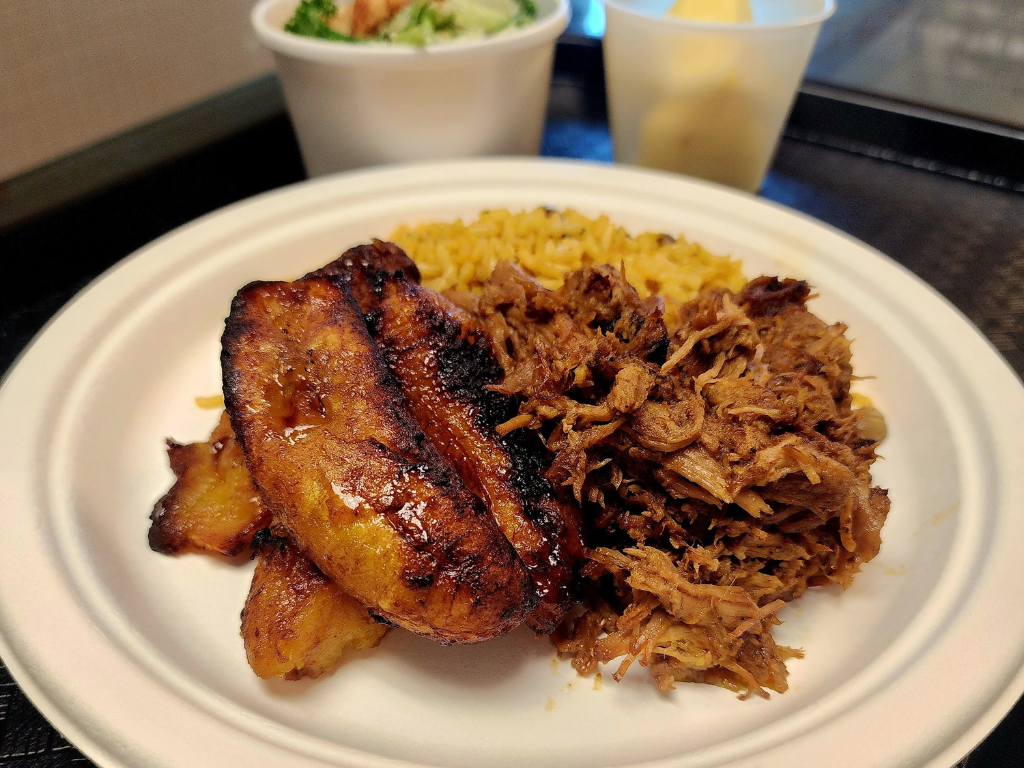5 Delicious School Lunches With Local Ingredients
Fresh, local ingredients make these amazing school lunches shine.
Fresh, local ingredients make these amazing school lunches shine.

You’ve heard that it’s good for people and the planet to eat local. But did you know that applies to school meals, too?
When schools buy and serve foods from local farmers and other producers, they help build resilient local economies and increase access to nourishing foods for the whole community. Locally sourced food requires less fuel to transport, and therefore has a smaller environmental impact than food that travels a longer distance. And local food is fresh and therefore more nutrient-dense—an important factor for growing bodies and minds.
Finally, offering locally sourced food gives kids a chance to learn more about where their food comes from, connect with producers, and care about their role in the food system. Local food is a win-win-win for kids, schools, and communities.
The short answer: yes! School nutrition teams across the country partner with local farmers and food producers to create meals that are fresh, nutritious, delicious, and culturally affirming. While every school nutrition team has different resources and funding available to access local ingredients, we commend all school nutrition professionals who find creative ways to serve nourishing meals.

This special school lunch served during Rio School District‘s Compost Tea Party features an array of locally sourced California ingredients.
The main course of this lunch is a fajita steak sandwich on a fresh-baked brioche bun. The steak is California-raised grass-fed beef sourced from Watkins Ranch Butcher Shop in Ojai, while the bun was baked using California-grown wheat at Roan Mills Bakery in Fillmore. The veggies were sourced from Alcantar Family Farms, and the fruits from Edgar Espinoza of McGrath Family Farm, Firesign Farm Bakersfield, and Mendez Produce.

At Boyne Falls Elementary, a graduated FoodCorps school in Michigan, this school lunch uses fresh greens as the building blocks for a delicious meal. This tray features a main course of pasta with house-made pesto, and locally procured asparagus and salad greens on the side.

Through initiatives like Harvest of the Month, California’s Rio School District finds plenty of opportunities to highlight locally grown and procured foods. This tray features California-raised, free-range chicken thighs with a flavorful chipotle rub, southwest salad and tri-colored bell peppers from Laubacher Farms, and a Harvest of the Month persimmon salad with valencia oranges from Friends Ranch.

Locally sourced pork is the star of this lunch served in New London Public Schools in Connecticut. This traditional Puerto Rican dish of pernil (slow-roasted pork shoulder), arroz con gandules, and roasted plantains was developed by staff from New London Public Schools food services. The pork is sourced from Secchiaroli Farm in Waterford, the same farm where the school cafeteria’s compost is sent.

This school lunch tray from Portland Public Schools in Maine features locally grown blueberries from Passamaquoddy Blueberry Company, a local Passamaquoddy Tribe-owned business in the state, alongside a sandwich and fresh bean salad and veggies.
Got an example of a gorgeous school lunch to share? Post it on social media and tag @foodcorps!
Related read: USDA’s Proposed Rule for School Meals Shines a Light on Local | “Buying food directly from local farmers and suppliers has many benefits, including more reliability and fewer supply chain disruptions (even during COVID). Purchasing directly from producers also keeps food dollars in the community, stimulating the local economy. Even better is that building those local relationships cultivates community and a direct line of communication between schools and food suppliers. Local producers can choose crops and ensure inventory that are most relevant as schools build their menus.”

Harris v. Trump: Who Will Put Children First?

The Policy Brief, Summer 2024: Why Summer EBT Matters

3 Inspiring LGBTQ Food and Farming Orgs to Know